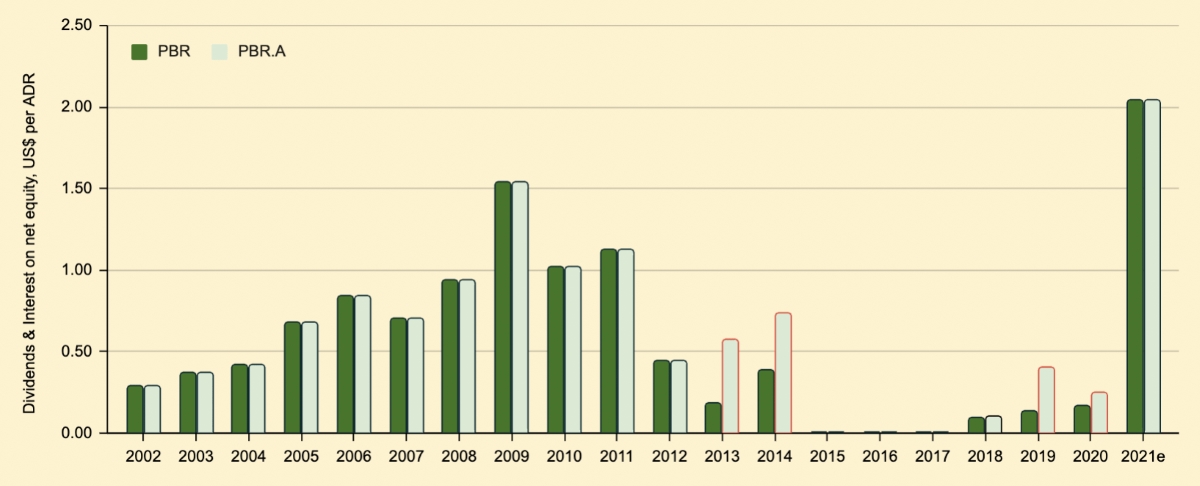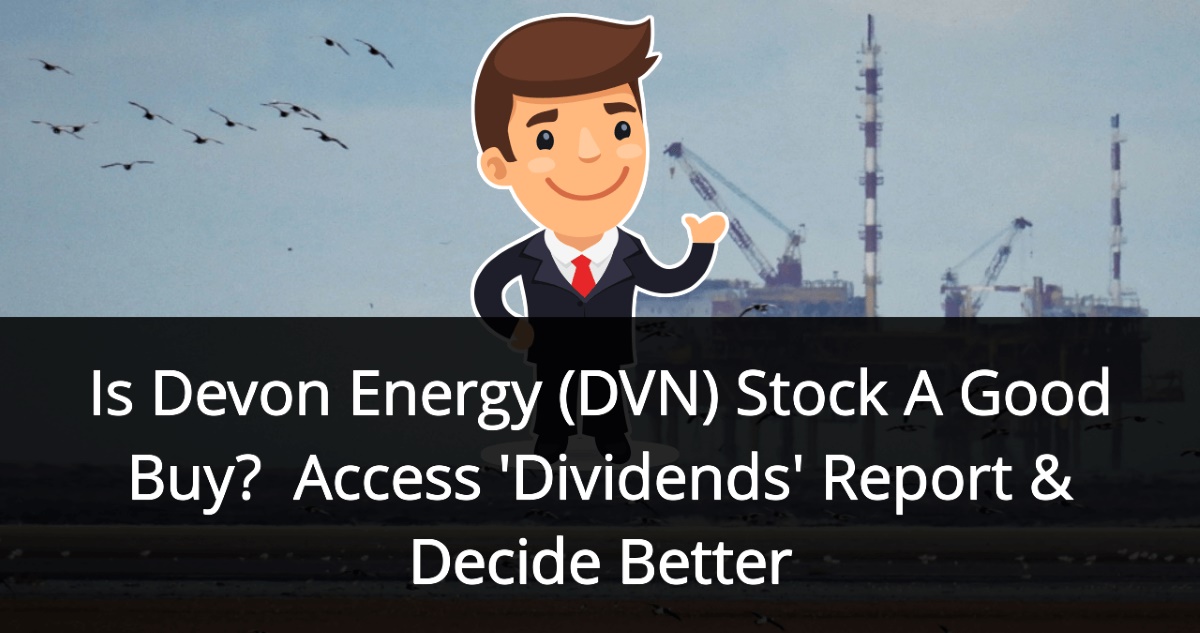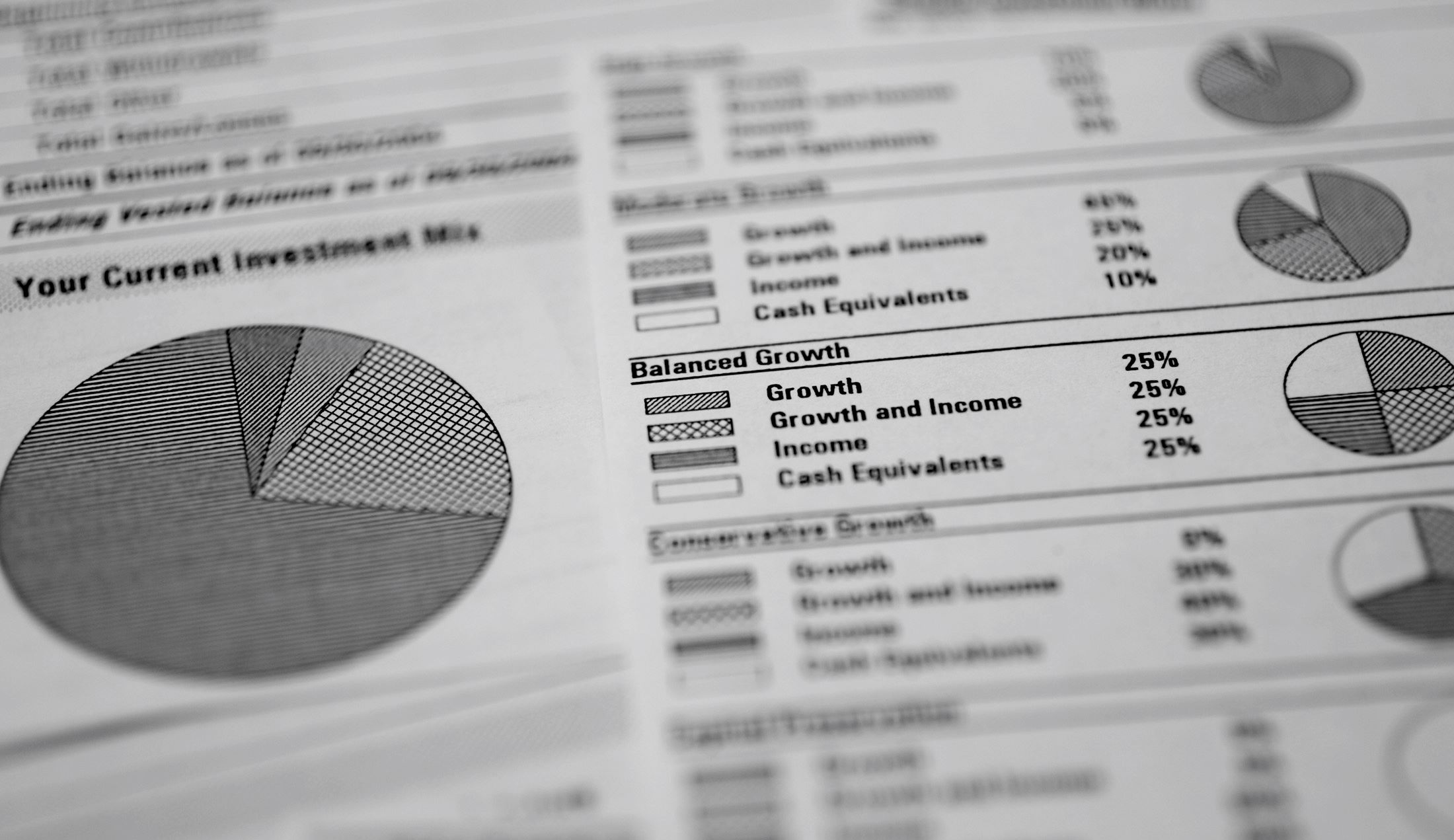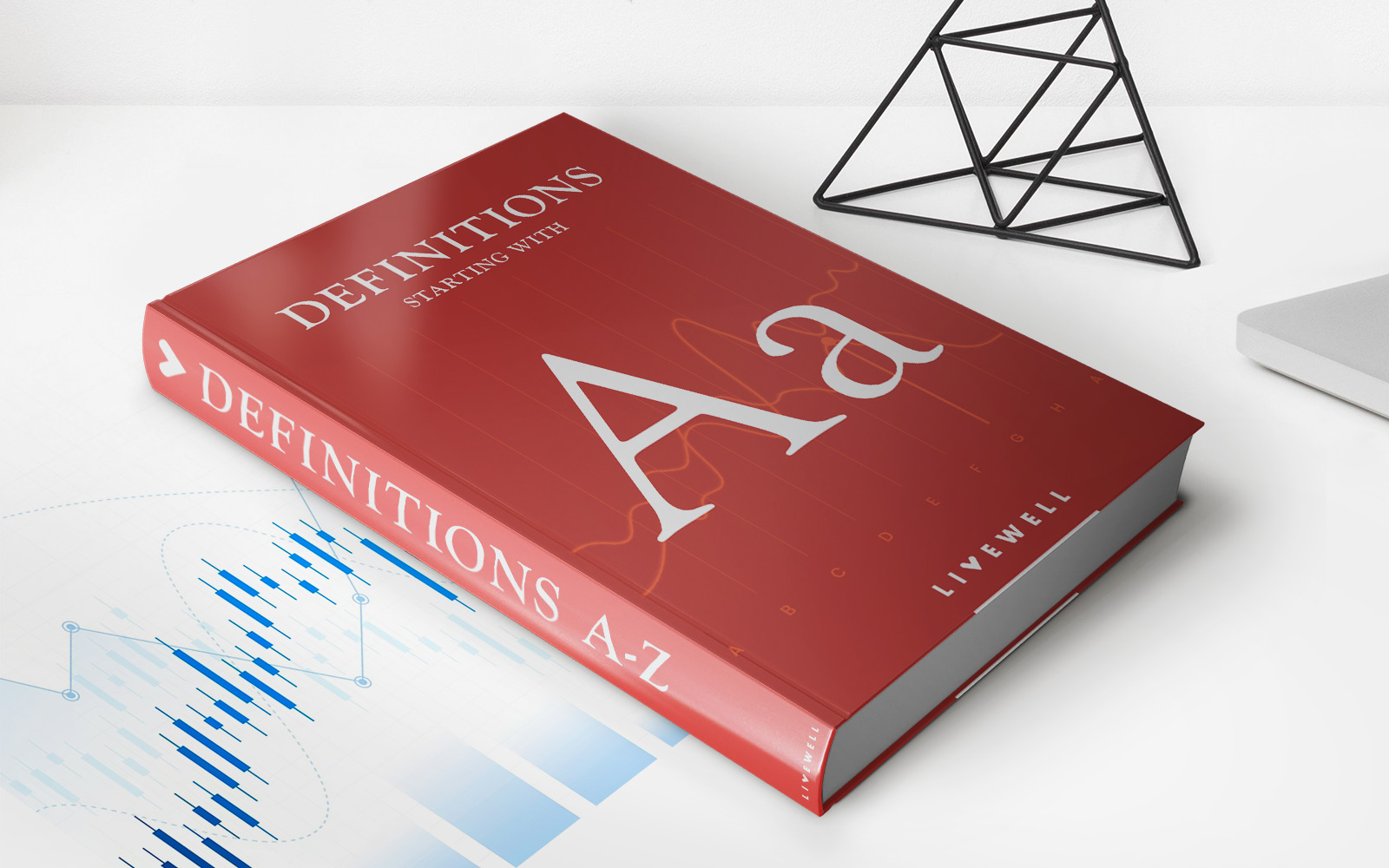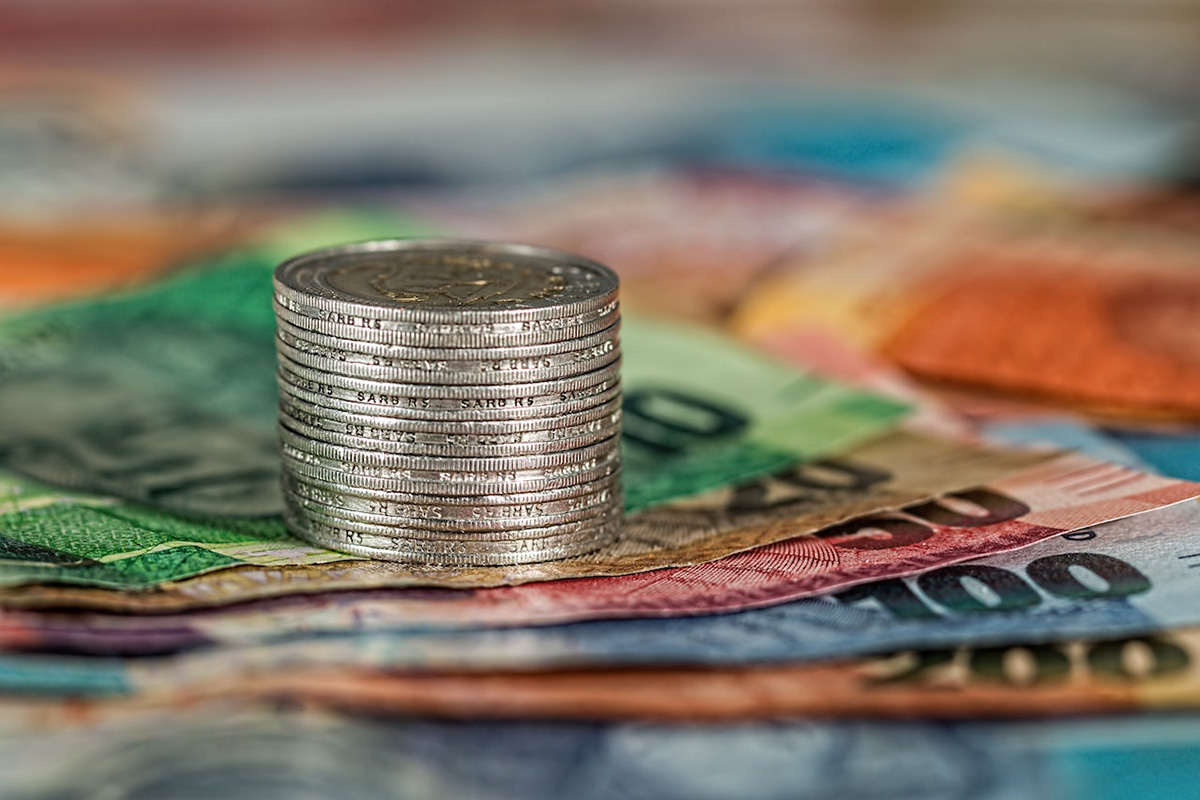

Finance
When Does VOO Pay Dividends?
Published: January 3, 2024
Learn about VOO's dividend payout schedule and when investors can expect to receive dividends. Find out more about finance and dividend investing.
(Many of the links in this article redirect to a specific reviewed product. Your purchase of these products through affiliate links helps to generate commission for LiveWell, at no extra cost. Learn more)
Table of Contents
Introduction
Investing in the stock market can be an excellent way to grow your wealth and secure your financial future. One popular investment vehicle is the exchange-traded fund (ETF) known as Vanguard S&P 500 ETF (VOO). With its focus on mimicking the performance of the S&P 500 index, VOO has gained considerable attention from investors.
While the primary goal of investing in VOO is to benefit from the capital appreciation of the underlying stocks in the S&P 500, there is another potential aspect that can add to its appeal: dividends. Dividends are often regarded as a source of passive income, making them an attractive feature for investors looking for regular cash flow.
In this article, we will dive into the dividends paid by VOO, discussing when and how they are paid out to investors. Understanding the dividend payment schedule and the factors that influence it can help investors plan their investment strategies accordingly.
So, if you have invested or are considering investing in VOO, read on to discover when this popular ETF pays dividends and how it can contribute to your investment goals.
Understanding VOO
Before delving into the details of VOO’s dividend payment schedule, let’s first understand what VOO is and how it functions as an investment vehicle.
VOO, also known as the Vanguard S&P 500 ETF, is an exchange-traded fund that aims to replicate the performance of the Standard & Poor’s 500 Index (S&P 500). It does this by investing in the same stocks that make up the index, in the same proportions.
The S&P 500 is a benchmark index that measures the performance of the 500 largest publicly traded companies in the United States. It includes a diverse range of industries, such as technology, healthcare, finance, and consumer goods. By investing in VOO, you are essentially gaining exposure to these 500 companies in a single investment.
VOO offers several advantages to investors. Firstly, it provides broad market exposure, allowing investors to benefit from the overall growth of the U.S. stock market. Secondly, it offers diversification, as it spreads the investment across 500 companies, reducing the risk associated with investing in individual stocks.
Additionally, VOO is traded on stock exchanges, just like individual stocks. This means that investors can buy and sell shares of VOO throughout the trading day at market prices, providing liquidity and flexibility.
It’s important to note that VOO is not actively managed. Instead, it operates on a passive investment strategy, aiming to match the performance of the S&P 500 rather than outperforming it. This passive approach helps keep expenses low, making VOO an attractive option for cost-conscious investors.
Now that we have a solid understanding of VOO, let’s turn our focus to dividends – a key aspect of this popular ETF.
Dividends in VOO
Dividends play a crucial role in the total return potential of an investment, and VOO is no exception. While VOO is primarily focused on capital appreciation, it also distributes dividends to its investors.
Dividends in VOO are derived from the underlying stocks in the S&P 500 index. As a shareholder of VOO, you are entitled to receive a portion of the dividends paid by the companies within the index.
It’s important to recognize that VOO’s dividend payments are typically lower compared to individual stocks. This is because VOO is an index fund that holds a diversified portfolio of stocks, and the dividend yield of the S&P 500 index is generally lower than that of individual high-dividend-paying stocks.
However, the benefit of investing in VOO lies in the potential for long-term growth and the compounding effect of reinvesting dividends. By reinvesting the dividends received, investors can purchase additional shares of VOO, thereby increasing their ownership and potential future dividend income.
Dividends in VOO are typically paid out on a quarterly basis, as per the dividend payment schedule. The specific dates associated with dividend payments and the dividend yield may vary from quarter to quarter, depending on the performance of the underlying stocks within the S&P 500 index.
It’s worth noting that the amount and timing of dividend payments in VOO can be influenced by factors such as economic conditions and corporate earnings of the companies within the S&P 500 index. As stock prices and dividend policies of individual companies change, they can impact the overall dividend yield of VOO.
Now that we understand the basics of dividends in VOO, let’s explore the dividend payment schedule and the important dates associated with dividend distributions.
Dividend Payment Schedule
The dividend payment schedule of VOO follows a predictable pattern, allowing investors to anticipate when dividends will be distributed. Understanding the key dates associated with dividend payments is essential for investors to stay informed and plan their investment strategies accordingly.
There are four important dates to be aware of when it comes to VOO’s dividend payment schedule:
- Ex-Dividend Date: This is the date on or after which a new investor purchasing VOO shares will not be eligible to receive the upcoming dividend payment. If you buy VOO shares before the ex-dividend date, you are considered the rightful owner of the shares and entitled to the dividend.
- Declaration Date: This is the date on which the company declares the upcoming dividend payment. It is typically a few weeks before the ex-dividend date. On this date, the exact amount of the dividend is announced, along with any additional details regarding the distribution.
- Record Date: Also known as the “books close” date, this is the date on which the company reviews its records to determine the shareholders eligible to receive the dividend. If you are a shareholder on the record date, you will be entitled to the dividend, regardless of whether you still hold the shares on the payment date.
- Payable Date: This is the date on which the dividend is actually paid out to eligible shareholders. It is the day when the dividend funds are distributed by the company or its transfer agent. This is the day investors receive the cash payment or see the reinvested dividend in their account.
By understanding these important dates, investors can plan their investment actions accordingly. For example, if an investor wants to be eligible for the upcoming dividend, they need to purchase VOO shares before the ex-dividend date. Conversely, if an investor is looking to buy shares without being entitled to the current dividend, they should wait until after the ex-dividend date.
It’s important to note that the specific dates for VOO’s dividend payments can vary from quarter to quarter. Therefore, it is recommended to stay informed about the dividend declaration date, as well as by regularly checking the VOO prospectus or the official Vanguard website for the updated dividend payment schedule.
In the next sections, we will take a closer look at each of these important dates and understand their significance in relation to VOO’s dividend payment schedule.
Ex-Dividend Date
The ex-dividend date is a critical date for investors who want to receive the upcoming dividend payment. It is the first important date in VOO’s dividend payment schedule, and understanding its significance is crucial for investors looking to optimize their dividend income.
The ex-dividend date is the date on or after which a new investor purchasing VOO shares will not be eligible to receive the upcoming dividend payment. If you own VOO shares before the ex-dividend date, you are considered the rightful owner of the shares and entitled to the dividend.
It’s important to note that the ex-dividend date is set by the stock exchange and typically falls two business days before the record date. This gap allows for the settlement of trades before the record date.
For example, if the ex-dividend date is set as July 1st, and you purchase VOO shares on or before June 30th, you will be eligible to receive the upcoming dividend payment. However, if you purchase VOO shares on or after July 1st, you will not be entitled to the current dividend.
This date is important as it aims to ensure an equitable distribution of dividends among shareholders. It prevents investors from buying shares just to collect the dividend and then selling them immediately after, commonly known as “trading the dividend.”
It’s also worth noting that the price of VOO shares may adjust on the ex-dividend date to account for the upcoming dividend payment. Typically, the share price decreases by the amount of the dividend, as the distribution of dividends reduces the company’s assets.
Keep in mind that while the ex-dividend date is important for investors looking to receive the upcoming dividend, it may not have a significant impact on long-term investors who are primarily focused on capital appreciation rather than regular dividend income.
Understanding the ex-dividend date is crucial for investors looking to plan their investment activities to optimize their dividend returns. By purchasing VOO shares before the ex-dividend date, investors can ensure their eligibility for the upcoming dividend payment and potentially benefit from the dividend income or the opportunity to reinvest it back into additional shares.
Declaration Date
The declaration date is a significant date in VOO’s dividend payment schedule as it marks the official announcement of the upcoming dividend payment. This date provides important information to investors regarding the dividend amount and other relevant details.
The declaration date occurs several weeks before the ex-dividend date and is set by the company managing VOO or its trustees. On this day, the company announces the dividend payment and declares the specific amount per share that will be distributed to the shareholders.
During the declaration date, the company also provides important information such as the record date, ex-dividend date, and payable date. This information is crucial for investors to plan their investment strategies accordingly.
Additionally, the declaration date may include any additional information or requirements related to the dividend distribution. For example, the company may specify if the dividend will be paid in cash or if shareholders have the option to reinvest the dividend back into additional VOO shares.
For investors, the declaration date serves as a notification of the upcoming dividend payment and allows them to make informed decisions about their investments. It provides an opportunity to assess the potential impact of the dividend on their overall investment objectives, and to plan the reinvestment or utilization of the dividend income received.
It’s important to stay updated with the declaration date, as the dividend amount and other relevant details can vary from quarter to quarter. You can find this information in VOO’s prospectus, on the official Vanguard website, or through other reliable financial resources.
In summary, the declaration date is a crucial component of VOO’s dividend payment schedule. It is the date on which the company officially announces the upcoming dividend payment, including the dividend amount, record date, ex-dividend date, and payable date. By staying informed about the declaration date, investors can better plan their investment strategies and make informed decisions about their VOO holdings.
Record Date
The record date is an important date in VOO’s dividend payment schedule as it determines which shareholders are eligible to receive the upcoming dividend. It serves as a cut-off date for establishing the ownership of VOO shares and is used to determine the dividend distribution.
Also known as the “books close” date, the record date is set by the company managing VOO or its transfer agent. It is typically a few days after the ex-dividend date and falls in between the ex-dividend date and the payable date.
If you own VOO shares on or before the record date, you are considered a shareholder of record and are entitled to receive the dividend, even if you sell the shares before the actual payment date. The record date determines who will receive the dividend based on the ownership recorded in the company’s books.
It’s important to note that the specific timeframe for the record date is predetermined and announced by the company managing VOO. This information can be found in VOO’s prospectus or through reliable financial resources.
For example, let’s say the ex-dividend date is on July 1st, and the record date is set as July 5th. If you are a shareholder of VOO on or before July 5th, you will be eligible to receive the dividend, regardless of whether you still hold the shares on the payment date.
It’s essential to understand that the record date serves as an administrative measure to ensure an accurate distribution of dividends. The company reviews its records on the record date to identify the shareholders who are entitled to receive the dividend payment.
As an investor, it’s crucial to keep track of the record date to ensure your eligibility for the dividend. If you plan to purchase or sell VOO shares, you should take into consideration the ex-dividend date and the record date to strategically align your actions with the dividend payout.
Overall, the record date is an important date for VOO shareholders as it determines their eligibility to receive the dividend. By being aware of the record date and ensuring ownership of VOO shares on or before that date, investors can secure their entitlement to the dividend payment, even if they subsequently sell their shares before the payment date.
Payable Date
The payable date is the most anticipated date in VOO’s dividend payment schedule as it signifies the day when shareholders will actually receive their dividend payments. It is the final step in the dividend distribution process and brings financial rewards to investors.
Also known as the “payment date,” the payable date is determined by the company managing VOO or its transfer agent. It is the date when the dividend funds are distributed to eligible shareholders.
On the payable date, investors will receive the cash dividend payment directly deposited into their brokerage accounts. Alternatively, if investors have chosen to reinvest their dividends, they will see the reinvested dividend reflected in their account in the form of additional VOO shares.
It’s important to note that the payable date is typically a few weeks or even a month after the record date, allowing enough time for the company to process and distribute the dividends to shareholders. The specific payable date for each dividend distribution is announced by the company and can be found in VOO’s prospectus or through other reliable financial resources.
For example, if the record date for VOO’s dividend payment is July 5th, the payable date might be set as July 30th. On this specific date, eligible shareholders will receive their dividend payments in the form of cash or additional shares of VOO, based on their chosen dividend reinvestment plan.
It’s crucial for investors to be patient and allow sufficient time for the payment to be processed and reflected in their accounts. If the payable date has passed, and you still haven’t received your dividend payment, it is advisable to contact your brokerage firm or the transfer agent responsible for VOO to inquire about the status of the payment.
The payable date represents the culmination of the dividend cycle, providing investors with the actual financial rewards of their VOO investment. It serves as a tangible realization of the income potential and can contribute to an investor’s financial goals.
As an investor, it’s important to be aware of the payable date and plan accordingly for the receipt of dividend payments. Whether you choose to use the funds for personal use or reinvest them back into your portfolio, the payable date is a significant event that holds financial significance for VOO shareholders.
Tax Considerations
When it comes to investing in VOO and receiving dividends, it’s essential to understand the tax implications associated with these transactions. Here are some key tax considerations to keep in mind:
1. Dividend Taxation: Dividends received from VOO are generally subject to taxation. The tax rate applicable to your dividends depends on various factors, including your income level and your country’s tax laws. In the United States, dividends are typically taxed at either ordinary income rates or qualified dividend rates, depending on specific criteria.
2. Qualified Dividends: Dividends that meet certain requirements are termed as qualified dividends and are subject to lower tax rates. To qualify for the lower tax rate, the dividend must be paid by a U.S. corporation or a qualified foreign corporation, and the investor must meet the holding period requirements, typically holding the shares for at least 60 days during the 121-day period surrounding the ex-dividend date.
3. Tax-Advantaged Accounts: Investing in VOO through tax-advantaged accounts, such as an Individual Retirement Account (IRA) or a 401(k) plan, can offer tax benefits. Contributions to these accounts may be tax-deductible, and any dividends earned within the account are not subject to immediate taxation. However, withdrawals from tax-advantaged accounts are generally taxed at ordinary income rates.
4. Foreign Tax Withholding: VOO may invest in foreign companies, and some of these companies may withhold foreign taxes on dividends paid to VOO. This foreign tax withholding can impact the after-tax amount of dividends received by investors. However, investors may be eligible for foreign tax credits or deductions to offset the impact of foreign taxes.
5. Tax Reporting: Investors in VOO will receive tax documentation, such as Form 1099-DIV, which summarizes the dividend income received during the tax year. It is important to accurately report this income on your tax return to ensure compliance with tax regulations.
It is advisable to consult with a tax professional or financial advisor to fully understand the tax implications of investing in VOO and receiving dividends based on your individual circumstances. They can provide guidance on tax planning strategies and help optimize your tax efficiency.
Remember, tax laws and regulations can change, and the information provided here is for general informational purposes only. It is always important to stay updated with the latest tax laws and consult with a qualified professional for personalized advice.
Conclusion
Investing in VOO can offer investors exposure to the performance of the S&P 500 index and the potential for long-term growth. While VOO primarily focuses on capital appreciation, dividends also play a role in enhancing the total return potential of this popular ETF.
Understanding the dividend payment schedule of VOO is essential for investors looking to maximize their investment strategy. Key dates such as the ex-dividend date, declaration date, record date, and payable date provide insights into when dividends are distributed and who is eligible to receive them.
While the dividend yield of VOO may be lower compared to individual high-dividend-paying stocks, it can still contribute to an investor’s overall portfolio income and potentially be reinvested for additional shares to achieve the compounding effect.
However, it is important to recognize the tax considerations associated with investing in VOO and receiving dividends. Taxation rates, qualification for lower tax rates, and the impact of foreign tax withholding should all be taken into account for proper tax planning.
Ultimately, investing in VOO requires an understanding of both the potential for capital appreciation and the role of dividends in the overall investment strategy. By staying informed about the dividend payment schedule, being aware of tax implications, and seeking professional advice when needed, investors can make well-informed decisions to achieve their financial goals.
As with any investment, it’s crucial to conduct thorough research, assess your risk tolerance, and consider your long-term investment objectives before investing in VOO or any other financial instrument.
Remember, this article serves as general information and should not be considered as financial or tax advice. It is recommended to consult with a qualified financial advisor or tax professional who can provide personalized guidance based on your unique circumstances and goals.

